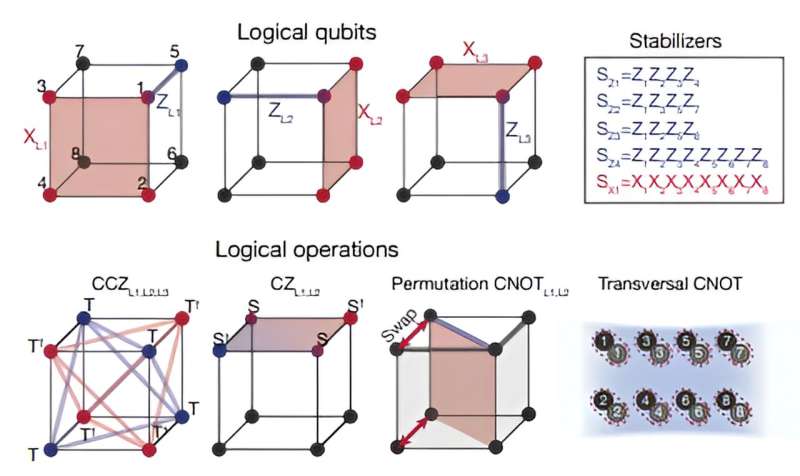December 7, 2023 report
This article has been reviewed according to Science X's editorial process and policies. Editors have highlighted the following attributes while ensuring the content's credibility:
fact-checked
peer-reviewed publication
trusted source
proofread
Using logical qubits to make a quantum computer that can correct its errors

A team of physicists, computer scientists and information machine specialists at Harvard University, working with colleagues from QuEra Computing Inc., the University of Maryland and MIT, has created a quantum computer with the largest-ever number of logical quantum bits. In their paper published in the journal Nature, the group describes how they built their computer and how well it performed when tested.
In the recent past, several big names in quantum computing have built quantum computers with more than 1,000 cubits—giving such computers more computing power than ever before. Unfortunately, all of them suffer from the massive amounts of error-correcting they require, a problem keeping such computers from going mainstream.
The makers of such systems are working on a way to reduce the problem, but thus far, a real solution has not been found. Other players have moved into the quantum computer research world using a different approach based on logical qubits rather than hardware-based qubits.
Logical qubits are groupings of qubits connected via quantum entanglement. Instead of relying on redundant copies of information as an error-correcting protocol, logical qubit–based machines rely on the built-in redundancy of entanglement. For this new study, the research team built a quantum computer with 48 logical qubits, the most yet by any team.
The new computer was built by separating thousands of rubidium atoms in a vacuum chamber. The team then used lasers and magnets to chill the atoms to near absolute zero. They used other lasers to create qubits from 280 of the atoms and then entangle them and were able to create 48 logical qubits at one time. The logical qubits were made to interact using optical tweezers, avoiding the need for wires.
Preliminary testing of the machine showed that while executing calculations, their quantum computer had fewer errors than other larger machines based on physical qubits. The researchers suggest their machine represents yet another step toward the ultimate goal of creating a general-use quantum computer that can perform calculations and combinatorics that are not yet feasible using current computer technology.
More information: Dolev Bluvstein et al, Logical quantum processor based on reconfigurable atom arrays, Nature (2023). DOI: 10.1038/s41586-023-06927-3
Journal information: Nature
© 2023 Science X Network





















